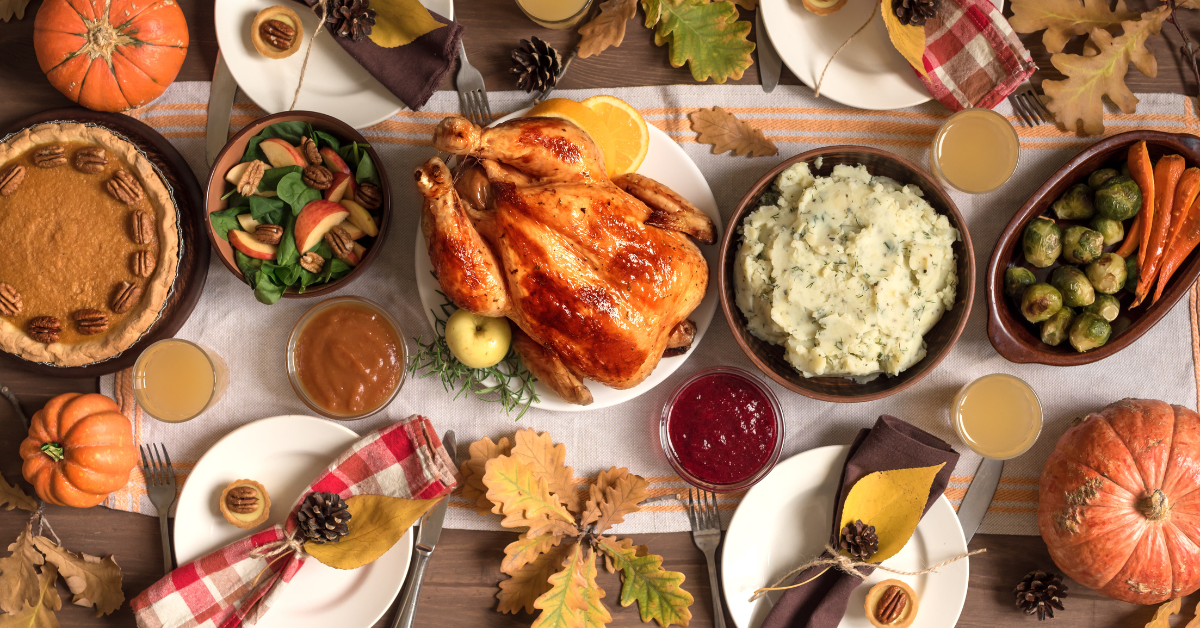I think you all know by now that I love to cook. I have heard from many of you and know not all of you share the same passion. Some of you have confessed that you dread coming up with dinner ideas each night and several have mentioned that the thought of heading to the grocery store can be overwhelming. I believe I just might have the solution to your mealtime dilemmas.
Meal Planning and Meal Prepping! You have probably heard of meal planning before but may not understand exactly what it is or why people take the time to do it. Meal planning is simply the process of planning out your meals and recipes for the week ahead and then doing the necessary grocery shopping for those meals in one trip.
Meal prepping is simply preparing your meals or parts of your meals ahead of time so that you can save even more time and be more efficient. Over the years, I have been putting meal planning and prepping into practice and have come to understand the incredible value of it. I typically have a full calendar (as many of you do), so to make my days work, it is key to have all of my meals planned out, recipes on hand, and the ingredients at my fingertips. I don’t always have time to think of ideas on the fly or to run out and grab missing items. Imagine ending YOUR long day with a clear idea of what’s for dinner AND having all the ingredients you need readily available to make it happen.
I am excited to share a three-part blog series with you to explain meal planning and prepping. In this post, I will take you through the many benefits and strategies on how to actually implement a successful meal plan. The third section will outline the meal-prepping aspect.
Let’s start with the undeniable benefits:
1. Save Time and Reduce Stress
This is very appealing to me since I often have crazy days. Think about the relief you would feel as your day wraps up knowing exactly what’s for dinner. No more last-minute pressure or scrambling through your fridge and cupboards to piece together a meal. This kind of certainty definitely reduces the stress and chaos of my evenings.
2. Control Over Nutrition
This is my favorite! When you plan your meals, you gain control over what you’re eating. This hopefully means you make healthier choices and focus on better nutrition. You can plan a balanced diet and search out recipes that incorporate your favorite fruits and vegetables, healthy proteins, and whole grains. You can make a conscious decision to stray away from ready-made processed foods. Don’t be afraid to experiment with new and exciting dishes. This is a big step toward a healthier you!
3. Save Money
Meal planning helps you cut back on spontaneous grocery shopping and eating out. With recipes laid out and a clear list of what you need, you’re less likely to make impulse purchases and only buy what you need. Also, when you have the ingredients for a delicious meal on hand, you are less likely to eat out or have a fast food meal delivered. Over time, this saves you money, which is always a welcome bonus.
4. Reduce Food Waste
How many times have you thrown away spoiled ingredients or leftovers? I have really cut back on my food waste with meal planning. It has helped me stay on track with the amount of food I buy and helps me plan to use my leftovers both of which reduce waste and save me money.
5. Variety and Creativity
Contrary to what you might think, meal planning doesn’t mean eating the same meals every week. In fact, it allows you to be more creative in your cooking. Try out new recipes, experiment with different cuisines, and look forward to a variety of meals that keep you excited. Check out hundreds of delicious and healthy recipes from our Faithful Workouts website by clicking here.
6. Family and Social Benefits
Meal planning encourages togetherness. I suggest you include your family or roommate(s) in planning some of your meals. It can be a fun, bonding experience and it guarantees that everyone likes what you’re serving!
7. Time-Efficient Grocery Shopping
When you plan meals, you will take fewer trips to the grocery store and shopping will become a lot easier because you go to the store with a list in hand, making your trip more efficient and less time-consuming. No more wandering the aisles which also reduces the chances of unhealthy and impulse buying.
I get why you might think taking the time to plan meals is just one extra task, but I hope I have convinced you that spending a little time upfront to plan your meals for the week can actually save you time and, as I mentioned, make your week less stressful as well as healthier. It’s a skill that anyone can learn and apply, regardless of how much you like to cook or how good you are at it.
As you can see from the long list of benefits, meal planning can be a game-changer. I hope you’re ready to give meal planning a shot. Good or bad, dinner is something we inevitably encounter day after day for the rest of our lives. Maybe you look at meals as a dreaded puzzle that needs to be solved each day, maybe you want to figure out a way to eat healthier or to save time and/or money preparing them, or maybe you enjoy the process but would like to try a new approach. Whatever your motivation, if you are willing to take some time each week to follow the steps below, I have found it is actually a pretty simple tool that can revolutionize things for you.
Steps to a successful meal plan:
1. Start with a Goal
Before you dive into meal planning, ask yourself what you hope to achieve. Is it eating healthier, getting more creative, saving time or money, minimizing wasted food, or all of the above? Your goal will shape your approach. Meal planning is a great opportunity to consciously make your meals healthier as you take time to browse through recipes and strategize meals.
2. Check Your Calendar
Look at your week ahead and determine the number of evenings you and your family or roommate(s) will be around to eat dinner at home. Also, think about your days and early evenings and determine which may be extra busy and require an especially simple recipe, a crockpot meal, or even a plan-ahead leftover (see Step 5).
3. Create a Menu
Begin by creating a menu for the week based on the number of dinners you need to prepare. I like to do my planning and shopping on Saturdays, but figure out which day works best for you. When creating your menu, consider the goals you set above, what fresh fruits and vegetables are in season, and your family’s likes and dislikes. Your menu doesn’t have to be complicated; start with simple meals you enjoy. Remember to incorporate fresh vegetables, whole grains, and proteins (free of nitrates and additives), and try to limit processed foods. For some delicious and healthy recipe ideas, check out hundreds of recipes on our website by clicking here.
4. Make a Grocery List and Head to the Grocery Store
Once your menu is ready, compile a list of all the ingredients you need. Trying to remember my list doesn’t work for me. I find it critical to write the list down on a piece of paper or on my phone. Check your fridge, freezer, and pantry to see if you already have any of the ingredients you need on hand. This step is crucial to avoid over-purchasing or forgetting items at the store. It also streamlines your shopping trip, making it more efficient and less stressful. Head to the grocery store and gather up what you need for the week.
5. Be Flexible
As we all know, life is unpredictable, so allow for some flexibility in your plan. I like to have a few quick and easy backup meals for those days when I don’t have time to cook as planned. Don’t shy away from leftovers. They can save you time on busy days and help reduce wasted food. I like to incorporate them into my plan as “leftover nights” or repurpose them into new dishes. I am famous for heating up leftovers and throwing a fried egg on top for breakfast.
It might take some practice to perfect your meal-planning skills, but the benefits are well worth the effort. Start small, stay flexible, and enjoy the benefits of organized eating. Happy planning!
Let’s take it a step further and talk about meal prepping. There are several ways to execute meal prepping but for the sake of this post, I am going to share tips on how to prep for the week ahead.
Step-by-step guide to Meal Prepping:
Step 1: Plan Your Prep Day
• Choose a specific day and time that works best for you to dedicate to meal prep. It might work best to do it over the weekend so you will be set for the week ahead.
• Make sure you clear a chunk of time, as meal prep can take a couple of hours, depending on the complexity of your recipes and the number of meals you’re preparing.
Step 2: Gather Your Supplies
• Pull out your recipes for the week. Then assemble all the necessary equipment and supplies, including cutting boards, sharp knives, measuring cups, mixing bowls, pots, pans, baking sheets, and a variety of airtight containers.
• Ensure your workspace is clean and organized to streamline the process.
Step 3: Prep Your Ingredients
• Begin by washing, peeling, and chopping your fruits and vegetables as needed for your recipes.
• Precook items like grains (rice, quinoa, pasta) and proteins (chicken, beef, tofu) following your recipes.
• If you plan to make sauces or dressings, prepare them in advance.
Step 4: Cook Multiple Dishes Simultaneously
• To save time, multitask by cooking different components of your meals simultaneously. For example, while your protein is roasting in the oven, you can sauté vegetables on the stovetop and prepare grains in a separate pot.
• Be careful to avoid overcooking or burning any elements.
Step 5: Assemble Your Meals
• As your ingredients finish cooking, start assembling your meals. Use a variety of containers to portion out your ingredients according to your chosen recipes.
Step 6: Label and Date
• To prevent confusion and maintain freshness, label each container with the name of the meal and the date you made it.
• This step is crucial if you plan to freeze any meals.
Step 7: Cool Before Storing
• Allow your prepared meals to cool to room temperature before sealing them in containers. Storing hot food can create moisture, which may lead to spoilage.
• Once cool, ensure the containers are sealed tightly to preserve freshness.
Step 8: Storage
• Meals you plan to consume within the next few days should be refrigerated. Typically, meals can be stored in the refrigerator for 3-4 days.
• For longer-term storage, use the freezer. Glass containers are ideal if you intend to reheat your meals in the oven or microwave.
Step 9: Reheating
• When it’s time to eat, reheat your prepped meals with care. Use a microwave or oven, and avoid overcooking, which can affect the taste and texture.
• If you’re reheating frozen meals, remember to thaw them in the refrigerator overnight before reheating.
Step 10: Enjoy Your Week of Prepped Meals
• Congratulations! You’ve successfully meal-prepped for the week. Now, you can enjoy convenient, nutritious, and delicious meals every day. If you are up for it, have extra freezer space, and want to make extra of a certain recipe, go for it!
I hope you find this helpful. Savor the time and stress you save throughout the week!
Click here to go directly to our meal plan page, where you will find 7 amazing meal plans already designed for you!











